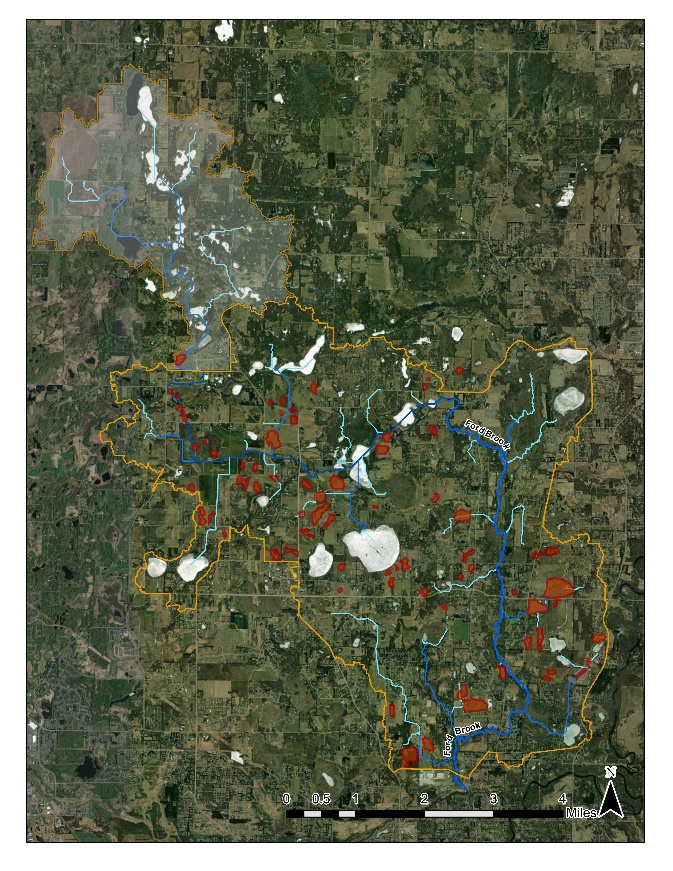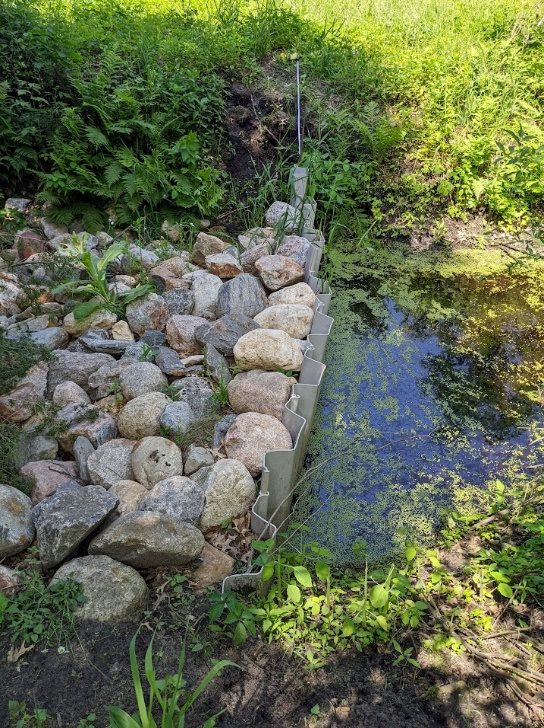Whether you call it a swamp, marsh, or low area, it is most likely a wetland and it is most likely regulated by someone.
Excavating: Anoka County residents frequently inquire how to improve their land for waterfowl or other wildlife. A common practice in Anoka County is pond excavations in seasonally saturated areas, or cattail-choked wetlands to provide an open water habitat. The Wetland Conservation Act regulates excavations in the permanently and semi-permanently flooded areas of type 3, 4, or 5 wetlands and also regulates the placement of spoil and the depth of the excavation in all types of wetlands. Other jurisdictions including the US Army Corps of Engineers and the Minnesota Department of Natural Resources may have regulatory authority on wetland excavation projects.
Draining: There is potential for pond excavations to drain adjacent wetland areas. Typically, in Anoka County, if the hydrology is predominantly groundwater driven, a pond excavation can be designed that will not drain adjacent wetlands. However, there is an increased likelihood that a pond excavation will drain adjacent wetlands when wetlands hydrology is primarily surface water, or when the excavation is connected to a drainage ditch. This is an issue that is best addressed by your local government or the Anoka Conservation District during review of a specific project.
Filling: Filling of wetlands must be avoided during pond excavations. The spoil from the excavation must be placed in an upland area. A qualified wetland professional may be needed to ensure that the destination of the spoil is upland.
Proper erosion control practices must be incorporated as well. If you have questions, contact the Anoka Conservation District for assistance. Contact us.









